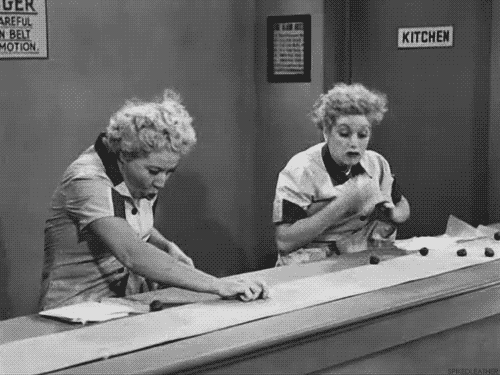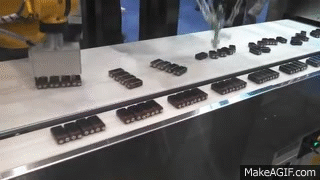How long will it be before you, too, lose your job to a computer? This question is taken up by a number of recent books, with titles that read like variations on a theme: The Industries of the Future, The Future of the Professions, Inventing the Future. Although the authors of these works are employed in disparate fields—law, finance, political theory—they arrive at more or less the same conclusion. How long? Not long.
“Could another person learn to do your job by studying a detailed record of everything you’ve done in the past?” Martin Ford, a software developer, asks early on in Rise of the Robots: Technology and the Threat of a Jobless Future (Basic Books). “Or could someone become proficient by repeating the tasks you’ve already completed, in the way that a student might take practice tests to prepare for an exam? If so, then there’s a good chance that an algorithm may someday be able to learn to do much, or all, of your job.”
Later, Ford notes, “A computer doesn’t need to replicate the entire spectrum of your intellectual capability in order to displace you from your job; it only needs to do the specific things you are paid to do.” He cites a 2013 study by researchers at Oxford, which concluded that nearly half of all occupations in the United States are “potentially automatable,” perhaps within “a decade or two.” (“Even the work of software engineers may soon largely be computerisable,” the study observed. )
The “threat of a jobless future” is, of course, an old one, almost as old as technology. The first, rudimentary knitting machine, known as a “stocking frame,” was invented in the late sixteenth century by a clergyman named William Lee. Seeking a patent for his invention, Lee demonstrated the machine for Elizabeth I. Concerned about throwing hand-knitters out of work, she refused to grant one. In the early nineteenth century, a more sophisticated version of the stocking frame became the focus of the Luddites’ rage; in towns like Liversedge and Middleton, in northern England, textile mills were looted. Parliament responded by declaring “frame breaking” a capital offense, and the machines kept coming. Each new technology displaced a new cast of workers: first knitters, then farmers, then machinists. The world as we know it today is a product of these successive waves of displacement, and of the social and artistic movements they inspired: Romanticism, socialism, progressivism, Communism.
Meanwhile, the global economy kept growing, in large part because of the new machines. As one occupation vanished, another came into being. Employment migrated from farms and mills to factories and offices to cubicles and call centers.
Economic history suggests that this basic pattern will continue, and that the jobs eliminated by Watson and his ilk will be balanced by those created in enterprises yet to be imagined—but not without a good deal of suffering. If nearly half the occupations in the U.S. are “potentially automatable,” and if this could play out within “a decade or two,” then we are looking at economic disruption on an unparalleled scale. Picture the entire Industrial Revolution compressed into the life span of a beagle.
And that’s assuming history repeats itself. What if it doesn’t? What if the jobs of the future are also potentially automatable?♦
It’s not a sure thing automation permanently obviates a wide swath of human workers, sending most of us to the exit or the dustbin. Perhaps it’s not different this time than it was during the Industrial Age, with machines relieving us of our jobs and new and better ones emerging in their stead.
The pace of epochal change matters greatly. For instance: Driverless capability may not be hugely damaging if it becomes widespread in five decades but is probably a real threat should that time frame be adjusted down to 20 years. No one has yet developed a suitable Plan B if too many positions disappear too rapidly or if enough new work doesn’t develop.
Not all labor has to be disappeared for society to capsize. Only enough citizens have to be directly disrupted for all of us to feel the ramifications. As we’ve seen with manufacturing and will likely soon witness in the service, transportation and delivery sectors, among others, just enough pieces of the foundation need fall away for desperation to take hold.
Complicating matters, today’s technologists aren’t working on half-measures, not the way banks wanted to keep tellers as they added ATMs. Jeff Bezos wants supermarkets 100% free of cashiers, and Tesla and Google and Uber want cars that commandeer the wheel completely.
That could lead to an even greater race to the bottom. More McJobs done by yesterday’s high school juniors being handled by today’s senior citizens–until those positions too are decimated. Bellhops and truckers won’t all be able to be uniformly upskilled overnight, and they aren’t points on a flow chart but people who need to feed their families.
MIT’s David Autor has said that the problem of mass automation would be “one of distribution, not of scarcity.” True enough, but that’s no small problem.
Two excerpts follow from two smart articles on the topic, one that sees the Google Glass as half-full and another which does not.
The opening of Chris Mims’ WSJ piece “Automation Can Actually Create More Jobs“:
Since the 1970s, when automated teller machines arrived, the number of bank tellers in America has more than doubled. James Bessen, an economist who teaches at Boston University School of Law, points to that seeming paradox amid new concerns that automation is “stealing” human jobs. To the contrary, he says, jobs and automation often grow hand in hand.
Sometimes, of course, machines really do replace humans, as in agriculture and manufacturing, says Massachusetts Institute of Technology labor economist David Autor in a succinct and illuminating TED talk, which could have served as the headline for this column. Across an entire economy, however, Dr. Autor says that’s never happened.
The threat that machines pose to workers is in the news again, after an election that turned on the frustration of working-class voters. Last week, Amazon.com Inc. introduced Amazon Go, a store without cashiers.
Three days later, President-elect Donald Trump nominated Andy Puzder, chief executive of CKE Restaurants Holdings Inc., the parent company of Hardee’s and Carl’s Jr. chains, to be secretary of labor. Mr. Puzder has said that self-serve ordering kiosks, like those recently unveiled by McDonald’s Corp., will help his company eliminate workers.
Such developments are worrying. But a long trail of empirical evidence shows that the increased productivity brought about by automation and invention ultimately leads to more wealth, cheaper goods, increased consumer spending power and ultimately, more jobs.•
From Elizabeth Kolbert’s New Yorker piece “Our Automated Future“:


